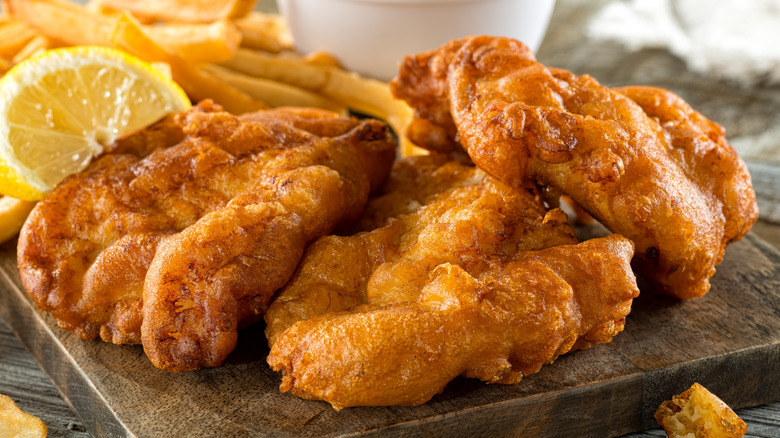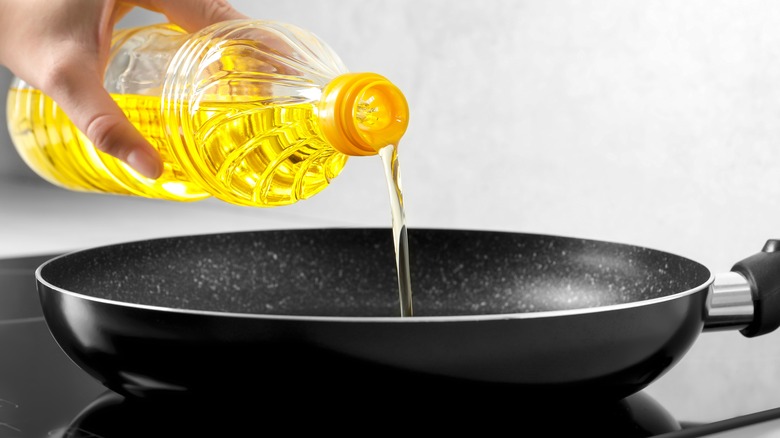The Best Oil For Frying Fish Is Likely Already In Your Pantry
When it comes to the perfect oil for frying fish, flashy fats need to take a backseat. Though fancy and expensive options like extra virgin and sesame oils have their merits, they struggle to withstand high temperatures. Their distinctive flavors can also risk overpowering the subtle sweetness of a prized fillet of fish. So what truly reigns as the ultimate oil for achieving fish-frying perfection? Look no further than the unassuming bottle of canola oil that likely resides in your pantry alongside the corn, vegetable, and olive oils because this is its turn in the driver's seat.
This versatile oil has a neutral flavor profile, guaranteeing it won't overshadow the delicate taste of milder fish varieties like tilapia, catfish, whitebait, and cod. Indeed, as the wallflower at the party, canola hangs back and lets characterful options with more robust flavors, like salmon, mackerel, and herring, take the spotlight and shine. Moreover, it boasts a notably high smoke point, surpassing many other cooking oils on the market. It's the unsung hero in your kitchen, waiting to elevate your fish dishes to new heights, because sometimes the simplest choice is the smartest. And if it means avoiding a schlep to the supermarket with the kids in tow, we're ready to hail it as champion.
Why canola shines for fried fish
Since fish fries around 350 to 375 degrees Fahrenheit, canola's oil 400-degree smoke point makes it ideal here. Cooking with very hot fat is vital when frying battered fish because it allows the coating to crisp up quickly, curbing the risk of overcooking the tender flesh inside; the flakes remain yielding and juicy instead of rubbery and dry. Oils with a lower smoke point become acrid when heated to these high temperatures, imparting a burnt, lingering smell to your food and kitchen. And turning down the heat only means the batter will take longer to develop that telltale crunch, causing the inside of the fish to absorb more oil and become greasy.
Secondly, minimal flavor transfer occurs with canola oil. You can reuse it to prepare crispy french fries without the fear of them tasting like fish but do note that the smoke point of cooking oil reduces when reused repeatedly.
Other options, like avocado and coconut oil, have a higher smoke point than canola but cost more, too, especially when used in a high volume for deep frying. Cotton seed oil is better because it's cheap and can still reach high temperatures without burning. However, the versatility of canola tips it over the edge when it comes to other contenders. Unlike a nutty sesame oil, which you probably won't use on the regular, canola is a workhorse ingredient — use it for baking, barbecuing, sautéing, and more. It's budget-friendly and un-smokin' hot.

